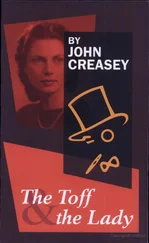Thus they complemented one another perfectly. While each answered the other’s need for security and support, each also appreciated the other’s self-sufficiency. Both were dedicated to their own careers, which neither ever curtailed for the other – not Margaret when their children were young, nor Denis when she became a Cabinet Minister.
Only once, around 1964, did Margaret’s growing political prominence strain Denis’s tolerance near to breaking point. For the most part he accepted, in a way remarkable for a man of conservative views born in 1915, the equality – and ultimately far more than equality – of his wife’s career with his own. In this he was indeed ‘an exceptional man’. 10Needing a husband, Margaret chose shrewdly and exceedingly well. Marriage to Denis was the rock of her career.
He actually proposed in September 1951. He says he made up his mind while on holiday in France with a male friend. ‘During the tour I suddenly thought to myself “That’s the girl”… I think I was intelligent enough to see that this was a remarkable young woman.’ 11She claims that she ‘thought long and hard about it. I had so much set my heart on politics that I hadn’t figured marriage in my plans.’ 12Be that as it may, she accepted. But the 1951 General Election came first. Attlee went to the country again in October. Miss Roberts – for the last time under that name – threw herself back into electioneering. It can have done her no harm that Central Office leaked the news of her engagement the day before polling. But of course the seat was still impregnable. She took another thousand votes off Dodds’ majority. More important, the Tories were narrowly returned to power (on a minority of the national poll). Just seven weeks later Miss Roberts became the second Mrs Thatcher.
The wedding, on 13 December, emphasised the bride’s new life in the Home Counties rather than her Midland roots. She was married in London, in the Wesleyan Chapel, City Road – ‘the Westminster Abbey of the Methodist Church’ 13 – but this was mainly because Denis, as a divorced man, could not remarry in an Anglican church. Alfred thought the ceremony ‘half-way to Rome’, 14and from now on Margaret increasingly identified herself with the Established Church. She did not even wear white, but a brilliant blue velvet dress with a matching hat decorated spectacularly with ostrich feathers, a replica of the dress worn by Georgiana, Duchess of Devonshire, in Gainsborough’s painting.
Typically, the honeymoon combined holiday with work – a few days in Madeira sandwiched between business trips to Portugal and Paris. It was Margaret’s first experience of foreign travel, but she never had much time for holidays; she was almost certainly impatient to get back to start homemaking, passing her Bar exams and looking for another seat. On their return she moved into Denis’s flat in Swan Court, Flood Street, Chelsea, just off the King’s Road, and began life as Margaret Thatcher. With marriage accomplished, she told Miriam Stoppard many years later, ‘this was the biggest thing in one’s life now sorted out’. 15
After the precocious triumphs of her two Dartford candidacies, Margaret Thatcher’s career was stalled for the next six years. Just when she had made such a spectacular beginning, marriage and then motherhood took her abruptly out of the political reckoning. In the long run, marriage set her up, both emotionally and financially: Denis’s money gave her the security and independence to dedicate her life to politics. But in the short run it set her back five years.
Not that she became a housewife: far from it. But she was obliged to concentrate her energies on her secondary ambition – to become a lawyer – while putting her primary political goal temporarily on hold. She was forced – reluctantly – to sit out the 1955 General Election. Not until 1958 was she able to secure a winnable constituency from which to resume her march on Westminster. Frustrating though it was at the time, this enforced period of retrenchment did her no harm. In 1950 she was young, conspicuous and headstrong: had she got into Parliament at that age she would inevitably have attracted a lot of attention and probably identified herself irreparably as a naively vigorous right-winger. As it was, six years of marriage, motherhood and law both matured her and made her much less visible, enabling her to slip easily into a career path of rapid but inconspicuous promotion, without weakening her fundamental instincts and convictions. Those who make their move too soon in British politics seldom make it to the top.
For the first time in her life she had money. She could at last surround herself with all those enviable mod cons she did not have in Grantham or in any of her cheerless digs. In Swan Court she could afford to entertain and quickly turned herself into a formidable hostess. But of course she also worked. Along with the cooking and the housework, she now had time to pursue her legal studies. She attended courses at the Council for Legal Education, working towards her intermediate Bar exams in the summer of 1953. If he did not know it already, Denis discovered that he had married a workaholic who would stay up long after he had gone to bed, or get up early, to finish whatever she had to do.
Almost certainly Margaret Thatcher wanted to have children – she would have regarded it as part of her duty, one of those social expectations she was programmed to observe – even though she must have known it would make finding a seat more difficult. She was confident of her own ability to handle the competing demands on her time; but local Conservative Associations were a different matter. Whatever her calculations, they were knocked sideways in August 1953 when she surprised herself and her doctors by producing twins. This was a wonderful piece of Thatcherite efficiency – two babies for the price of one, a boy and a girl, in a single economy pack, an object lesson in productivity. She had been expecting a single child in late September, but her labour pains started six weeks early. She went into Queen Charlotte’s Hospital on Thursday 13 August, was X-rayed next day and found to be carrying twins; they were delivered by Caesarean section on Saturday the 15th, weighing 4lbs each, and were christened Mark and Carol.
Giving birth to twins with the minimum disruption of her career became part of the Thatcher legend. She did not enjoy her pregnancy, which made her feel uncharacteristically unwell, so getting two children for the labour of one suited her admirably. ‘As she now had one of each sex’, Carol has written, ‘that was the end of it as far as she was concerned – she needn’t repeat the process.’ 16She could get on with what was more important to her. There and then, in her hospital bed, she committed herself to taking her final Bar exams in December. She had passed her intermediates in May and, twins or no twins, she was not going to postpone her finals. In fact their arrival six weeks early gave her more time.
On coming out of hospital she first hired an Australian nurse for six weeks while she found a permanent nanny, called Barbara, who stayed for five years. To give themselves more space, she and Denis rented the adjoining flat, knocking through a connecting door: this arrangement, with Denis and Margaret in one flat and Barbara and the twins next door, ensured undisturbed nights and maximum peace and quiet in the daytime for Margaret to work. She duly passed her final exams, was called to the Bar and joined her first chambers in January 1954.
While she was practising at the Bar, in Mark and Carol’s pre-school years, she told Patricia Murray, ‘I was never very far away – my chambers were only about twenty minutes from home, so I knew I could be back very quickly if I were needed.’ 17That was true – though perhaps optimistic – so long as the family was living in Chelsea. ‘I was there with them quite a lot during the early stages,’ she claimed in 1979. 18But in 1957, when the twins were four, the hitherto very low rent on their two flats in Swan Court was steeply increased as a result of the Conservative Government’s abolition of rent controls – an act which the Thatchers in principle approved. Rather than pay the new commercial rent they moved out of London to a large suburban house in Lock’s Bottom, Farnborough, in Kent. This gave Denis a much shorter daily drive to Erith. But it meant Margaret commuting every day. She could not now be home in twenty minutes. Then, when she got into Parliament in 1959, she was not at home in the evenings either.The nannies had to cope – first Barbara, later another, much older, known as Abby. ‘They kept the children in order and I always telephoned from the House shortly before six each evening to see that all was well.’ 19
Читать дальше












